PAR2-Mediated cAMP Generation Suppresses TRPV4-Dependent Ca2+ Signaling in Alveolar Macrophages to Resolve TLR4-Induced Inflammation
- PMID: 30995477
- PMCID: PMC6485424
- DOI: 10.1016/j.celrep.2019.03.053
PAR2-Mediated cAMP Generation Suppresses TRPV4-Dependent Ca2+ Signaling in Alveolar Macrophages to Resolve TLR4-Induced Inflammation
Abstract
Alveolar macrophages (AMs), upon sensing pathogens, trigger host defense by activating toll-like receptor 4 (TLR4), but the counterbalancing mechanisms that deactivate AM inflammatory signaling and prevent lethal edema, the hallmark of acute lung injury (ALI), remain unknown. Here, we demonstrate the essential role of AM protease-activating receptor 2 (PAR2) in rapidly suppressing inflammation to prevent long-lasting injury. We show that thrombin, released during TLR4-induced lung injury, directly activates PAR2 to generate cAMP, which abolishes Ca2+ entry through the TRPV4 channel. Deletion of PAR2 and thus the accompanying cAMP generation augments Ca2+ entry via TRPV4, causing sustained activation of the transcription factor NFAT to produce long-lasting TLR4-mediated inflammatory lung injury. Rescuing thrombin-sensitive PAR2 expression or blocking TRPV4 activity in PAR2-null AMs restores their capacity to resolve inflammation and reverse lung injury. Thus, activation of the thrombin-induced PAR2-cAMP cascade in AMs suppresses TLR4 inflammatory signaling to reinstate tissue integrity.
Keywords: Ca(2+) entry; NFAT; TRPV4; acute lung injury; alveolar macrophages; cAMP; protease-activating receptor 2.
Published by Elsevier Inc.
Conflict of interest statement
DECLARATION OF INTERESTS
The authors declare no competing interests.
Figures
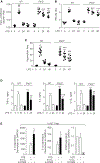
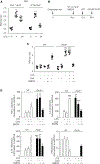
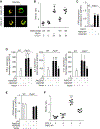
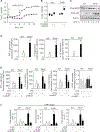
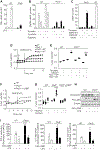
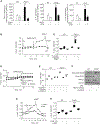

Similar articles
-
Neutrophil Elastase Activates Protease-activated Receptor-2 (PAR2) and Transient Receptor Potential Vanilloid 4 (TRPV4) to Cause Inflammation and Pain.J Biol Chem. 2015 May 29;290(22):13875-87. doi: 10.1074/jbc.M115.642736. Epub 2015 Apr 15. J Biol Chem. 2015. PMID: 25878251 Free PMC article.
-
Protease-activated receptor 2 sensitizes the transient receptor potential vanilloid 4 ion channel to cause mechanical hyperalgesia in mice.J Physiol. 2007 Feb 1;578(Pt 3):715-33. doi: 10.1113/jphysiol.2006.121111. Epub 2006 Nov 23. J Physiol. 2007. PMID: 17124270 Free PMC article.
-
The transient receptor potential vanilloid 4 (TRPV4) ion channel mediates protease activated receptor 1 (PAR1)-induced vascular hyperpermeability.Lab Invest. 2020 Aug;100(8):1057-1067. doi: 10.1038/s41374-020-0430-7. Epub 2020 Apr 27. Lab Invest. 2020. PMID: 32341518 Free PMC article.
-
Macrophage TLR4 and PAR2 Signaling: Role in Regulating Vascular Inflammatory Injury and Repair.Front Immunol. 2020 Sep 18;11:2091. doi: 10.3389/fimmu.2020.02091. eCollection 2020. Front Immunol. 2020. PMID: 33072072 Free PMC article. Review.
-
Endothelial TRPV4 channels in lung edema and injury.Curr Top Membr. 2022;89:43-62. doi: 10.1016/bs.ctm.2022.07.001. Epub 2022 Jul 28. Curr Top Membr. 2022. PMID: 36210151 Free PMC article. Review.
Cited by
-
Is Toll-like receptor 4 involved in the severity of COVID-19 pathology in patients with cardiometabolic comorbidities?Cytokine Growth Factor Rev. 2021 Apr;58:102-110. doi: 10.1016/j.cytogfr.2020.09.002. Epub 2020 Sep 21. Cytokine Growth Factor Rev. 2021. PMID: 32988728 Free PMC article. Review.
-
Modulating TRPV4 Channel Activity in Pro-Inflammatory Macrophages within the 3D Tissue Analog.Biomedicines. 2024 Jan 19;12(1):230. doi: 10.3390/biomedicines12010230. Biomedicines. 2024. PMID: 38275401 Free PMC article.
-
TRPV4 activation prevents lipopolysaccharide-induced painful bladder hypersensitivity in rats by regulating immune pathways.Front Immunol. 2022 Dec 22;13:1080302. doi: 10.3389/fimmu.2022.1080302. eCollection 2022. Front Immunol. 2022. PMID: 36618411 Free PMC article.
-
Role of macrophage TRPV4 in inflammation.Lab Invest. 2020 Feb;100(2):178-185. doi: 10.1038/s41374-019-0334-6. Epub 2019 Oct 23. Lab Invest. 2020. PMID: 31645630 Free PMC article. Review.
-
Urgent reconsideration of lung edema as a preventable outcome in COVID-19: inhibition of TRPV4 represents a promising and feasible approach.Am J Physiol Lung Cell Mol Physiol. 2020 Jun 1;318(6):L1239-L1243. doi: 10.1152/ajplung.00161.2020. Epub 2020 May 13. Am J Physiol Lung Cell Mol Physiol. 2020. PMID: 32401673 Free PMC article.
References
-
- Arniges M, Fernández-Fernández JM, Albrecht N, Schaefer M, and Valverde MA (2006). Human TRPV4 channel splice variants revealed a key role of ankyrin domains in multimerization and trafficking. J. Biol. Chem 281, 1580–1586. - PubMed
-
- Bair AM, Thippegowda PB, Freichel M, Cheng N, Ye RD, Vogel SM, Yu Y, Flockerzi V, Malik AB, and Tiruppathi C (2009). Ca2+ entry via TRPC channels is necessary for thrombin-induced NF-kappaB activation in endothelial cells through AMP-activated protein kinase and protein kinase Cdelta. J. Biol. Chem 284, 563–574. - PMC - PubMed
-
- Balakrishna S, Song W, Achanta S, Doran SF, Liu B, Kaelberer MM, Yu Z, Sui A, Cheung M, Leishman E, et al. (2014). TRPV4 inhibition counteracts edema and inflammation and improves pulmonary function and oxygen saturation in chemically induced acute lung injury. Am. J. Physiol. Lung Cell. Mol. Physiol 307, L158–L172. - PMC - PubMed
-
- Ballinger MN, and Christman JW (2016). Pulmonary Macrophages: Overlooked and Underappreciated. Am. J. Respir. Cell Mol. Biol 54, 1–2. - PubMed
Publication types
MeSH terms
Substances
Grants and funding
LinkOut - more resources
Full Text Sources
Other Literature Sources
Molecular Biology Databases
Miscellaneous

